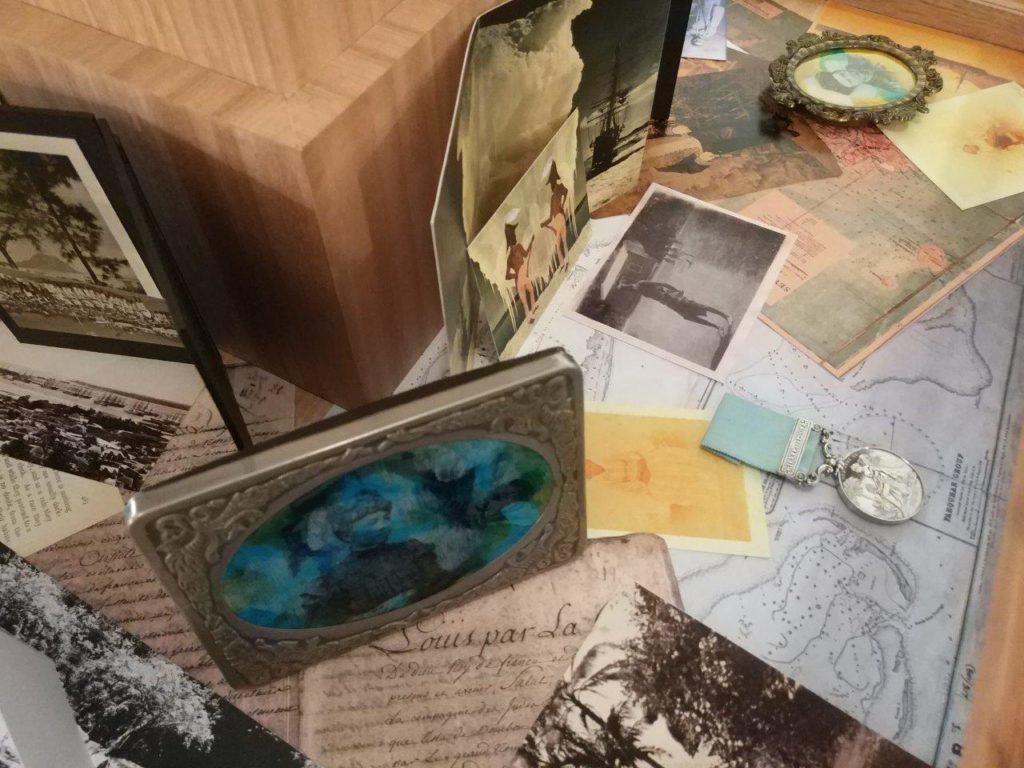
International Museums Day (18 May) has been celebrated each year since 1977 to promote the role of museums around the world. This year’s theme Hyperconnected museums raises awareness about museums as an important means of cultural exchange, enrichment of cultures and development of mutual understanding, cooperation and peace among peoples.
Recently, the Museum of Applied Arts and Sciences collaborated with the 21st Biennale of Sydney and the five artists who developed the ‘What’s Left Behind’ installation at the Museum of Contemporary Art Australia. This project is apt for exploring today’s hyperconnected museums.
Contemporary artist Brook Andrew invited four artists to contribute to ‘What’s Left Behind’, an installation which considers the idea of memory, that which is both present and absent. Andrew and the artists Mayun Kiki, Rushdi Anwar, Shiraz Bayjoo and Vered Snear explore the complex relationship between objects and the meanings that are attributed to them, particularly with relation to Western colonial histories which had strong resonance with their backgrounds. Each artist delved into the MAAS collection to select objects to be presented in combination with personal objects and artworks within each of Andrew’s sculptural vitrines. Working with MAAS staff, we were able to research items representing a range of subjects from the period of British administration in Iraq during the Kingdom of Iraq period (1921-58), the suppression of minority cultures including the Ainu people of Japan, technologies mapping the colonies (such as the marine chronometer), the ‘exotification of the East’ as described by Andrew and its enduring legacy and British colonialisation in Palestine and Australia.
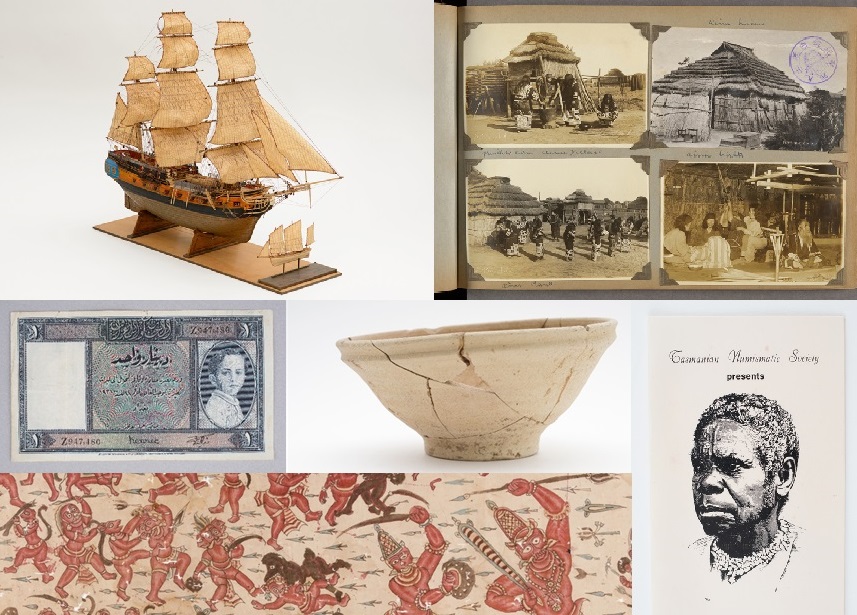
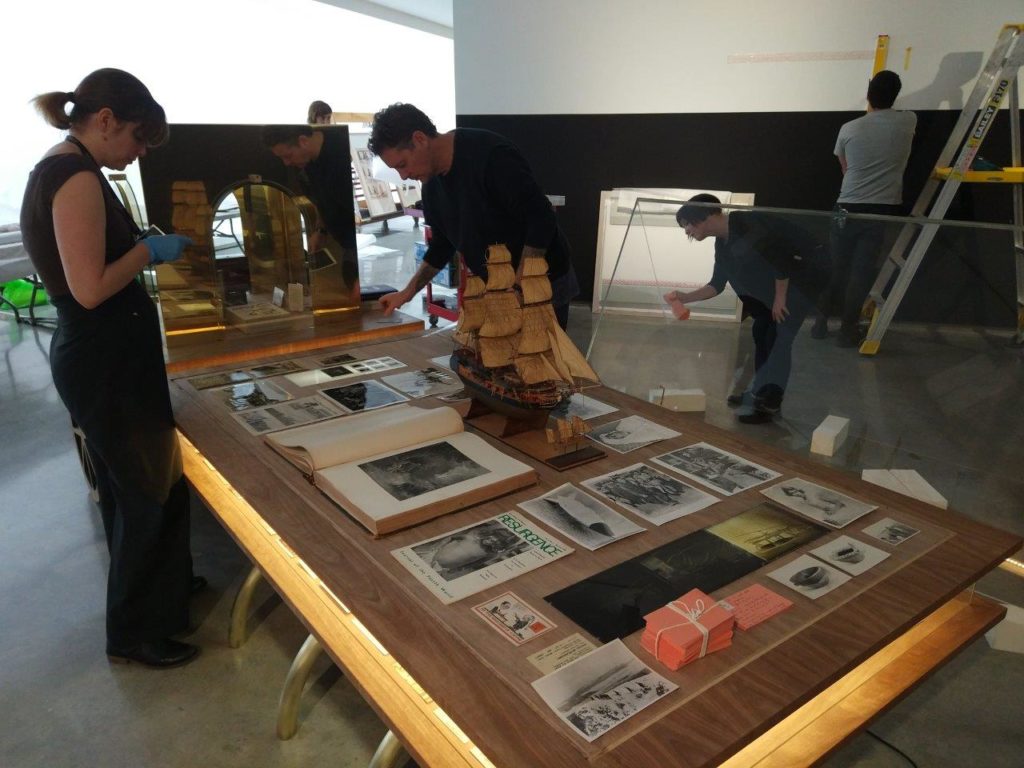
Museums should acknowledge that shared perspectives enrich our understanding and appreciation of material culture and enable us to construct more encompassing and meaningful stories both about our heritage and about living in a contemporary world. Collaboration with the artists participating in the Biennale of Sydney provided an opportunity to achieve this aim. The historical objects selected by the artists provided a lens through which their materiality and meanings could be re-interpreted and re-imagined when juxtaposed with art objects created by the artists that consider often neglected narratives, for example Anwar’s reflections on the socio-political issues of Kurdistan, Iraq and the Middle East, and Bayjoo’s exploration of the mapping of the Indian Ocean and legacies of colonialism on the history of Mauritius such as slavery and indentured labour systems. The experimental approach to the selection process and atypical grouping of objects allowed the collection to be viewed in a new light, thereby creating relevance for the MAAS historical collection in today’s contemporary society.
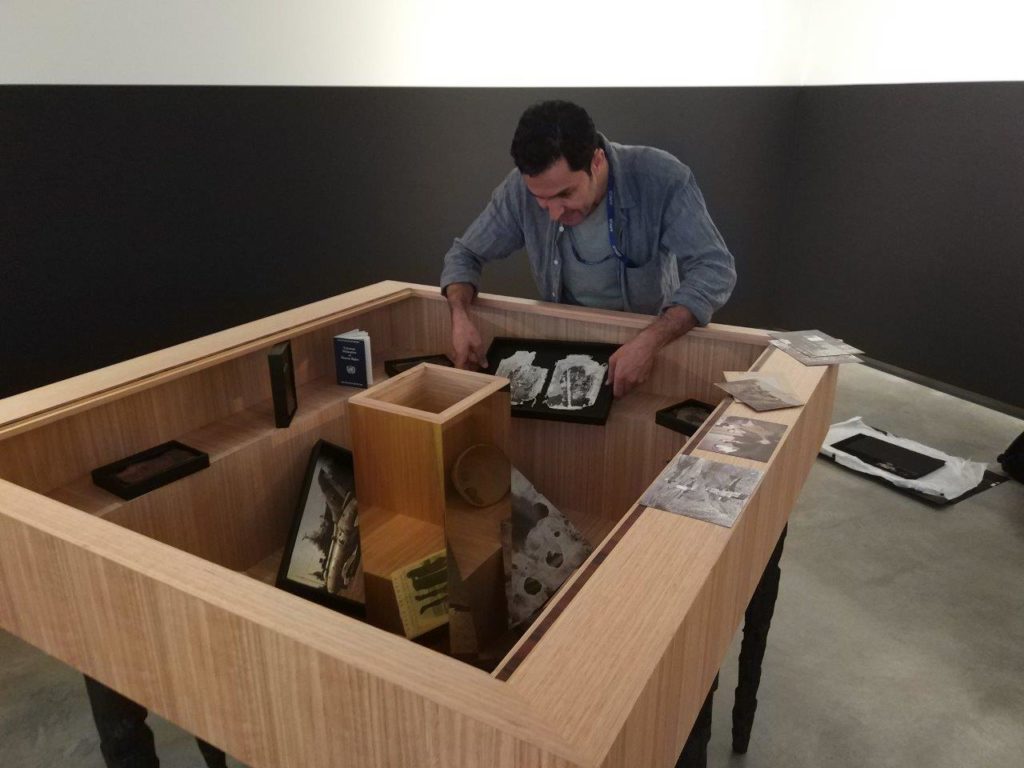
Another exciting aspect of the project was how it evolved primarily through the digital space. Bayjoo, Kiki and Snear all worked on this project from international locations without having physical access to the collections themselves. With Anwar based in Melbourne and Andrew spending the majority of his time overseas in Berlin, Germany and Eindhoven, Holland during the development of the project, the collaborative curation of this project occurred almost entirely via email and Skype. When the time came to install the exhibition in Sydney in March, it was wonderful to have the opportunity to take each of the artists through the MAAS collection store in Ultimo after several months of e-communication!
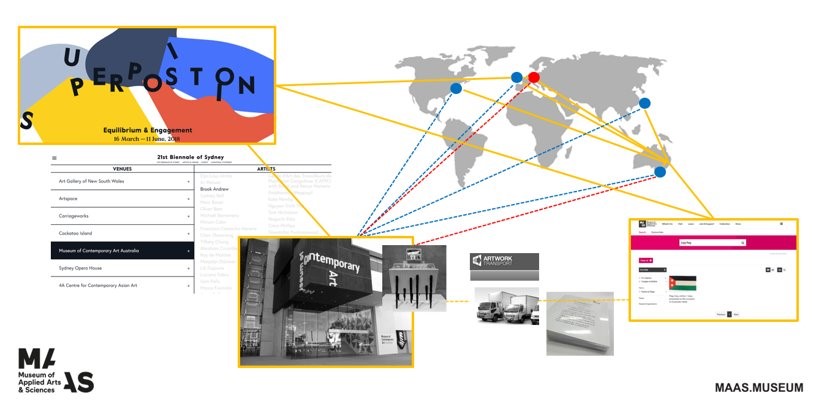
Museum collections are a unique resource kept alive through interpretation. Today’s hyperconnected museums provide a platform for experimentation, discourse and multi-way exchanges. The creative use of knowledge is at the core of MAAS’ remit and we recognise that these exchanges and shared perspectives enrich our understanding and appreciation of material culture.
Vanessa Thorne, Assistant Curator
May 2018